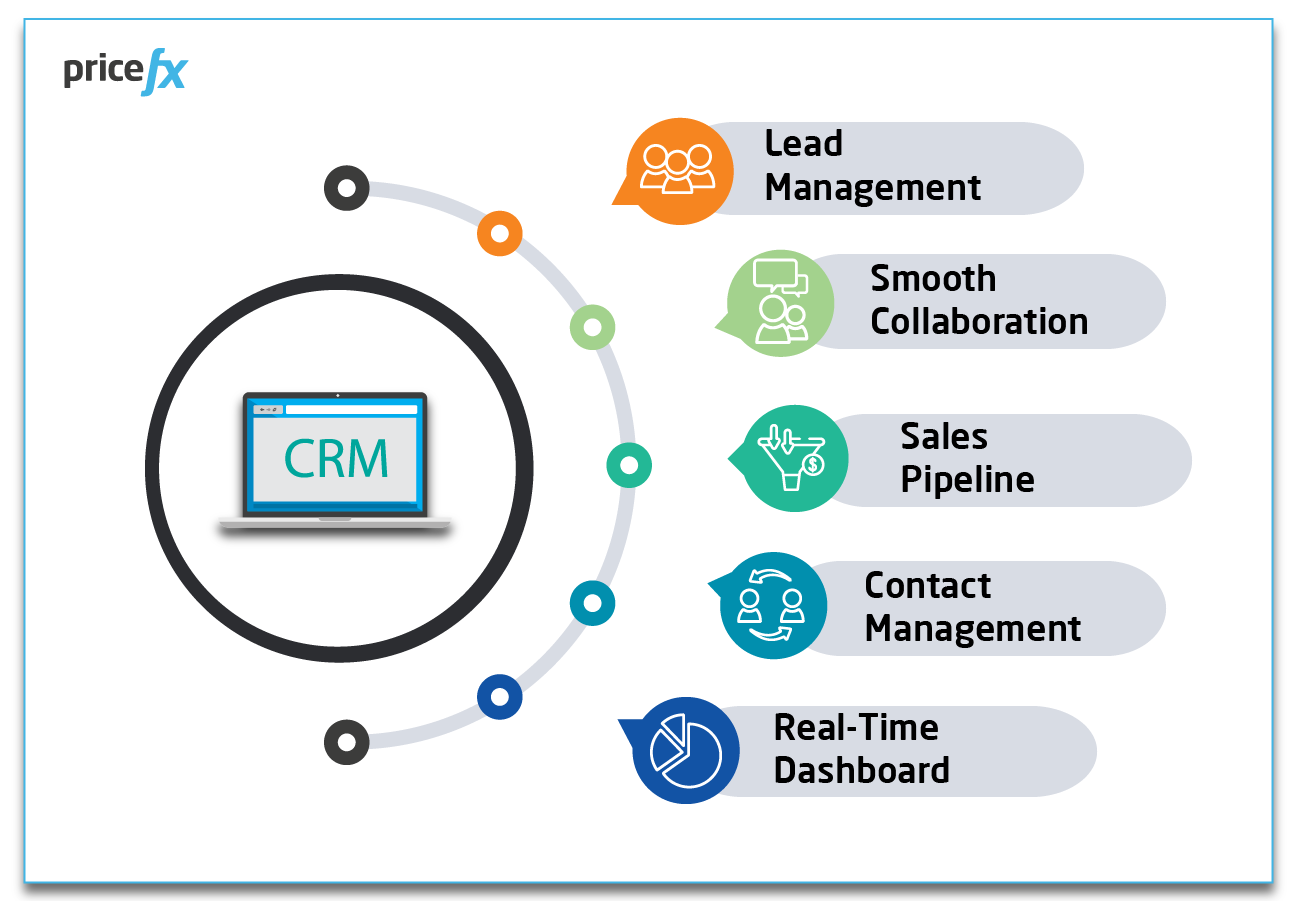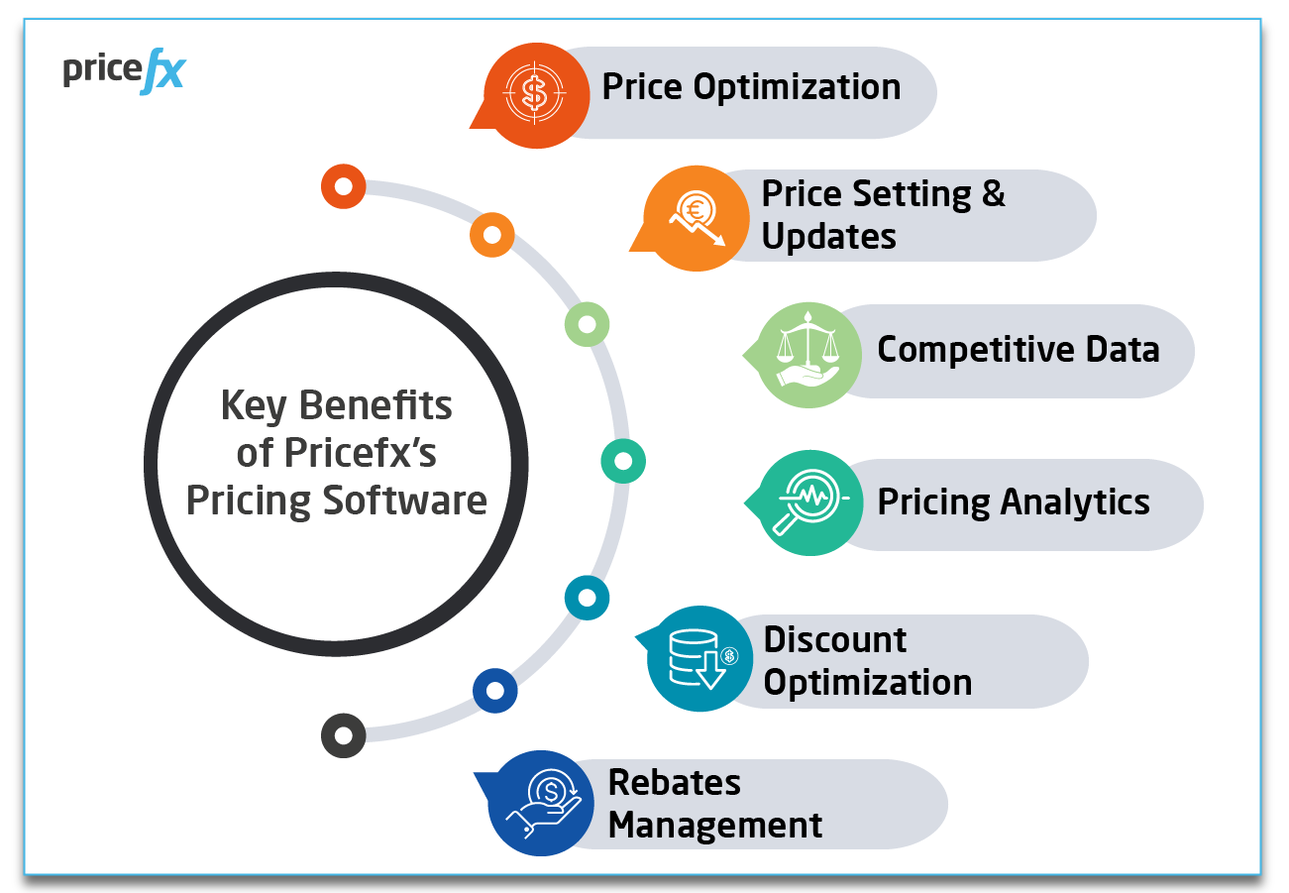How Pricing Software Can Augment Your CRM
January 27th, 2023 (Updated 03/09/2023) | 9 min. read
Business software can be very expensive and it’s crucial that you choose the right tools to empower your employees to do their jobs efficiently and well. That’s why so many companies have a CRM—to help ensure their teams have the customer, prospect and partner data they need to win deals and grow the business. So, it doesn’t really make sense to invest in pricing software as well… does it?
Pricefx is a global leader in pricing software implementation and has been helping its customers leverage powerful tools to boost the value of their CRM for the last decade. In this article, we explore what CRMs are, how pricing software differs, and how pricing software can supercharge your CRM and vice versa.
What is a CRM?
Customer Relationship Management (CRM) tools help companies manage their interactions with customers and prospects across their entire lifecycle in order to build better customer relationships, improve the customer experience, and increase sales.
Through data collation, reporting, and analysis, CRM software helps integrate the sales, marketing, and customer services teams to ensure they all have the same up-to-date customer data. And by streamlining and automating processes, it supports all teams in delivering a better, more relevant, friction-free experience to customers and prospects.

Much more than a fancy electronic address book, the CRM provides a complete summary of the entire relationship between the company and the customer to help companies better understand the relationship over time. It allows for the user from the company website, email, live chats, phone calls, personal visits, and social media, plus records and allows for the user base to analyzes things like:
- contact information and preferences
- previous purchases and status of current orders
- how long they’ve been a customer and loyalty status
- which campaigns they engaged with
- history of customer service issues or support tickets
Not only does it build a truly 360° view of the customer, but you can see everything in one place. Your CRM is a great source of truth for all things customer, partner, prospects and investors and enables you to create deeper relationships with all of those stakeholders.
What Is Pricing Software?
Pricing software helps companies determine the optimal price for their goods and services and supports the process of pricing to ensure profitability.
It does this by processing large amounts of historical data and leveraging machine learning and algorithms to recommend an optimal price that also takes real-time factors into account (like market conditions, regional differences, real-time competitor pricing, current promotions, actual availability, and revenue goals).
It helps pricing teams by defining pricing rules and benchmarks, as well guidelines for promotional, customer and exception pricing. It also helps them identify key prospects and maximize deal sizes with guidance for up-selling and cross-selling. By automating tedious pricing tasks, pricing software can dramatically speed up the process of price setting (from weeks to a day), meaning the team can spend more time on revenue-boosting activities, like moving away from a cost-plus approach toward more profitable value-based selling.
Pricing software also supports your sales team as it contains the capabilities of a Cost-Price-Quote (CPQ) system. This significantly reduces turnaround, helping them win more deals. It also ensures quotes are accurate and have taken all customer-specific pricing, volume agreements, rebates, and up-to-date delivery data into account.

With strong analytics capabilities, good pricing software supports companies in making better pricing decisions, by helping them visualize where prices are too high (affecting sales) or too low (affecting margin) and in anticipating the impact of a price change through what-if simulations. It will make price recommendations through a prescriptive analysis of your company’s unique data to help you determine what prices your business should be offering. It will also keep you abreast of the prices your competitors are offering (in real time) to guide your sales strategies and negotiations.
Just as your CRM is your single source of truth for your customer and prospect data, pricing software is your single source of truth for your pricing. It brings a 360° view of your pricing and sales history and the tools to analyze all this data to define a winning competitive pricing strategy that ensures all future price changes are optimal.
5 Ways Pricing Software Can Augment Your CRM
Integrating pricing software with your CRM doesn’t just combine two data sets to form one big one, it opens up a world of possibilities.
1) Embedded Intelligence: By integrating your CRM with pricing software you ensure a bi-directional flow of all your customer and prospect data and your pricing data, combining them to become even more intelligent data sets. You can have your customer intelligence embedded in your pricing, to be used in any part of the pricing process (quotation, rebate management, value-based selling, price optimization) and your pricing intelligence embedded in your CRM, for an even clearer picture of your customer and/or prospect how you can support them. Your sales team will be empowered with information customers want to know, like current prices, how they were calculated, discounts, rebates, upcoming offers, and refunds.
2) Value-Based Selling: Value-based selling is about pricing your offering based on the customer’s and prospect’s perceived value of it. One customer may value it greatly, another less so. By understanding which customer you’re selling to, you can offer prices that match their perceived value. To do this, you need to be able to segment your customers (by factors like region, previous purchases, size of client, etc.), and for this, your pricing software needs a lot of data… data that is held in your CRM. By integrating the two data sets (and capabilities), you’re able to execute value-based selling built on a 360° customer and prospect view.
3) Faster Quoting: Shorter quote turnarounds lead to more deals won, so being able to get back to your customer quickly with an accurate quote is essential. Customer data embedded in your pricing software give your sales teams all the account information they need to quickly create accurate quotes that are aligned with pricing guidelines and guardrails (e.g., how much of a discount or rebate is acceptable to ensure profitability of the deal) and in line with competitor prices. Not only is the customer and/or prospect happier, but you’ll win more profitable deals. It’ll also make it much easier to track deals in future as data from both sides are contributing to your single source of truth.
4) All in One Place: Companies that currently only use CRMs are suffering when it comes to pricing: They have to go into a separate system to retrieve pricing data, find and download the calculator, perform complicated calculations, copy and paste them all into Excel, e-mail them over to leadership for approval, only to have them declined and have to start again… With pricing software, the process is streamlined and automated. Your sales rep can go in, plug in a few details, and get a floor to ceiling price range or an exception rule that would be automatically either approved or sent to leadership. The result would then automatically show up in their CRM. Everything to do with pricing that deal is then managed and stored in one place.
5) Smoother Adoption: For companies keen to get pricing capabilities under their belt, integration between their CRM and pricing software is the best start, because your team is already comfortable with your CRM. All they have to do is explore the new pricing functionality embedded within it. However, this point comes with a caveat: leadership-led change management will still be required to ensure new processes are being followed, and someone should be made responsible for overseeing pricing updates. If CRM data is out of date, people will quickly revert to their old way of doing things.
Can’t I Just Use My CRM For That Stuff?
If you only have very few products and customers, and don’t really deal with different price points or complex calculations, then it’s likely you would be able to manage your pricing needs within your CRM. There would no real need to integrate with pricing software as the capabilities you’re paying for far outweigh your requirements.
However, for those with more complex pricing needs, your CRM will simply not cope. Even moving your pricing function across to Excel would leave you wanting. Firstly, pricing analytics is usually derived from transaction data, which consists of around 10 million rows across 200 columns… Excel rows are limited to just over 1 million. But more importantly, Excel relies on hours of error-prone manual input and reporting in order to produce anything meaningful (and even then, there is still no way to drill down). Multiple ad-hoc analyses are required to uncover opportunities and underperformance. After which, only a few people in the organization will really understand the data, because unlike quality pricing software, where price calculation and rationale is transparent so everyone understands it, Excel does its workings in a black box. Reporting capabilities are also often limited in CRMs.
Other things that pricing software can do that your CRM can’t without it:
- price optimization of the entire waterfall
- algorithm-based analytics of huge amounts of historical data
- sales-supportive CPQ functionality to reduce turnaround
- automated price setting and mass price updates (saving literally weeks of time)
- incorporating real-time external data (like competitor pricing, weather, commodity indexes)
- optimized discount and promotion setting and tracking
- complex rebate and claim management
- what-if market simulations to predict the impact of a price change (on the customer and competitor)
Greater Than The Sum of Its Parts
Your CRM is your source of truth. It is truth that holds all the information for all relationships that have been built (i.e., customers, prospects, partners, investors, etc. and does customer-related things your pricing software can’t). Your pricing software is your source of pricing truth (and does pricing things your CRM can’t).
However, having two sources of truth kind of goes against the meaning of the expression… That’s why integration is so important. By embedding your customer intelligence in your pricing software and your pricing intelligence in your CRM, not only do you create one very comprehensive source of truth, but you make those data sets even more powerful to the function of each.
If you’re interested in learning more about how much pricing software might set you back, then you’ll find your answers in this great article below on the costs of getting started with a quality pricing software solution:
